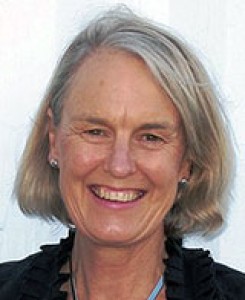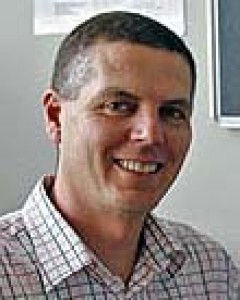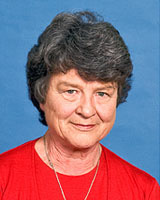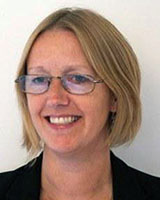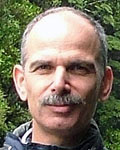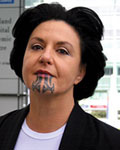Context
In common with many other countries New Zealand (NZ) has an acute shortage of rural and regional doctors1-3. In recent years there has been a net loss of GPs, the reasons for which have been widely reported in the literature4-9. While a significant increase in medical student numbers is planned, multi-level interventions are needed to address workforce shortages outside urban areas9. This article describes the design and implementation of one such initiative, the University of Auckland's new regional-rural program.
The University of Auckland's medical program is one of two in NZ for a population of over 4 million, 15% of whom are Māori (Indigenous). Each year 155 domestic students plus several international students are admitted. Up to 50 of the domestic students enter via 2 affirmative entry pathways: up to 30 are students of Māori or Pacific origin (MAPAS) and 20 are of rural origin. All medical students undertake two rural general practice attachments (2 weeks in year 4 and 3 or 6 weeks in year 6) plus 2 or 3 attachments to urban general practice.
In late 2006, medical school leaders began discussions with stakeholders in Northland about a regional-rural program. The main goal was to develop a student learning experience that would foster the local health workforce, now and in the future. Partnerships were established with the local Northland District Health Board (NDHB), primary health providers, Māori health providers and tribes. Local Māori Elders gave the name Pūkawakawa to the program, reflecting its significance in terms of the partnership, the local geography and a traditional medicinal plant. Funding was provided from within existing government medical student grants, with a significant contribution from NDHB.
Of the Northland population of 150 000, two-thirds live in rural settings, one-third is Māori, and two-thirds reside in the two most socioeconomically deprived decile areas10. Unlike many Australian and US rural models1,11-14, Pūkawakawa was designed to combine experiences in regional and rural settings in a 'hub and spoke' model, for geographic as well as academic and social reasons15. The 223 bed regional hospital at Whangarei serves as the 'hub' or home site for students. This is 2.5 hours by road north of the main campus in Auckland. The 3 'spoke' sites are approximately 2 hours away from the hub with populations ranging from 500 to just over 500010. These towns are served by GPs, community healthcare workers, Māori health providers and small rural hospitals staffed by local generalists and visiting sub-specialists. Two or three students are allocated to each of the spoke sites at a time.
Issue: intervention
Curriculum model
Pūkawakawa is closely aligned with other descriptions of mixed urban-rural schools16. These schools are historically urban-based with an expanded mandate to address the needs of specific rural and remote jurisdictions. They retain learning outcomes common to the urban program, but within a different geographical and service setting and with a different pattern of clinical attachments. The Pūkawakawa curriculum ran beside the standard year 5 program for 27 weeks. Students in year 5 were felt to have a sufficiently strong base of clinical and professional skills to make the most of new learning opportunities.
The curriculum design principles and program are outlined (Fig1, Table 1). There were 3 main attachments, each longer than in the standard program with one-third of the students on each clinical attachment at a time. It was anticipated that students would have more continuity of involvement in patient care, curriculum and supervision17, and more 'hands-on' experiences. An Australian study found that rural-based students saw double the number of common medical conditions and performed 6 times as many clinical procedures18. Another driver was that rural placements of less than a month were unlikely to increase the likelihood of students choosing a career in rural practice15,19. As a consequence, the integrated care and general practice attachment was 7 weeks, compared with a 2 week urban experience in the standard program.
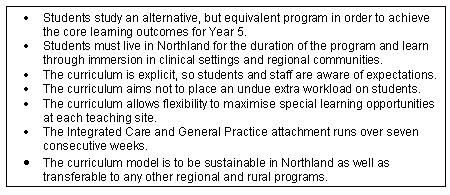
Figure 1: Summary of Pūkawakawa curriculum design principles.
Table 1: Comparison of the year 5 Standard and Pūkawakawa programs

The women and children's attachment was an intertwined timetable of paediatrics with obstetrics and gynaecology, designed to maximise the learning experience across these 2 clinical departments at Whangarei Hospital. During this time students spent 5 days with a midwife in clinics and on home visits. Some of the women and children's health learning activities took place in the integrated care and general practice attachment.
The secondary care attachment incorporated many of the activities of the standard program, especially geriatrics, ophthalmology, otolaryngology, and other aspects of surgery. Differentiating features were the attachments to acute medicine and surgery, with a broader and more undifferentiated acute case mix than is seen in metropolitan hospitals. During the secondary care attachments, students were living close to the hospital with free access to clinical areas and educational activities, such as intern teaching and hospital grand rounds. Students in the integrated care and general practice attachment were encouraged to follow patients in the local hospitals and into secondary and tertiary care settings.
Students completed 2 longitudinal case studies on selected patients, one who had a chronic medical condition and the other a woman with a complicated pregnancy. Over a period of 16 weeks at least 4 visits were made to each patient. The primary focus was not the medical aspects of the case but the wider issues of chronic disease management. Students critically examined the integrated nature of the care for the patients, involvement with patient family/whānau, broader health perspectives (eg social, cultural and economic impacts), and linkages between the relevant systems/services in the continuity of care.
Features in common with the standard program included a week-long procedural skills course at the start of year 5, taken by the standard program students at the beginning of year 6. There were 4 weeks on campus in Auckland covering core clinical and professional topics, plus a 4 week student-generated option undertaken in any discipline. The Pūkawakawa students undertook their population health project in Northland, developing a feasible strategy to address a local health problem, informed by discussions with local community agencies.
Assessment
Year 5 summative assessments for the Pūkawakawa students were similar to those in the standard program. These consisted of objective structured clinical exams (OSCEs), case presentations and supervisor reports during clinical attachments, 4 projects (including the population health group project), an end-of-year medical and surgical OSCE and 6 hours of written examinations. Results from the written examinations were combined with a grade derived from all the other assessments to determine whether students received a distinction, pass or fail for the year. To allow for the longitudinal case studies, Pūkawakawa students completed 2 fewer written case reports than students in the standard program.
Students
There were 38 applicants for the 2008 program. Selection for the inaugural cohort of 20 was by ranking based on a semi-structured interview and a small weighting factor. Rural-origin students received the highest weighting, followed by MAPAS, standard domestic and international students. This resulted in nine students of rural origin, five MAPAS, five other NZ domestic and one international student. Rural-origin students were encouraged but not compelled to apply for the program. For personal reasons, one student returned late in the year to Auckland. The 2009 cohort was selected in a similar manner and consisted of seven students of rural origin, seven MAPAS, and six other NZ domestic students.
Staff and student resources
Three new university appointments were made in Northland, namely an academic coordinator (0.5 FTE), a full-time administrator and a part-time clinical case coordinator (0.6 FTE). This person located patients prepared to be involved in the longitudinal case studies and other student teaching. While clinical teachers from the NDHB and the primary care sector provided most of the teaching and supervision, Auckland-based staff also contributed.
The NDHB provided 2 learning rooms: one with 20 computers linked to the University of Auckland network, and the other a tutorial room with videoconferencing facilities. Students had 24 hours/day, 7 days/week access to the main university resources through the intranet and to a medical library on-site. The NDHB refurbished an entire floor of the old nurses' home for student accommodation. Costs for accommodation and necessary travel between sites were met by the university. Local community organisations facilitated social activities for the students.
Program management
Initially program development was overseen by a multi-party project team. This transformed into a regional-rural curriculum committee, reporting to the MBChB Board of Studies. The initiative and evaluation plan were approved by the Board of Studies and the University's ethics committee. An independent project officer (0.8 FTE), conducted most of the evaluations, overseen by staff from the faculty's Centre for Medical and Health Sciences Education. The methods used were pre-course and post-course written questionnaires, focus groups, and individual semi-structured interviews with students, staff and stakeholders. Student achievement was also analysed. In addition to 'real-time' feedback to the project team on any pressing issues, a detailed report was supplied to the Board of Studies and other stakeholders in early 2009.
Lessons learned
Educational experience
All students (n = 19) completing the post-experience survey were satisfied with the Pūkawakawa experience (14 strongly so). The main reasons for satisfaction related to clinical learning opportunities, teaching and the acquisition of knowledge and skills. Students agreed they had seen a broad range of patients, and had adequate academic support, computer and library access and preparation for assessments. Many reported better understanding of the broader aspects of healthcare delivery.
After the experience, reservations remained about two main aspects. The first was in relation to supervisor feedback. Only 42% of students agreed that their supervisors helped them identify their learning needs. Several students expressed concern about the restricted knowledge of teachers in terms of curriculum learning outcomes and preparation for the end-of-attachment and final clinical examinations. The second reservation related to a lack of clarity in the format of the longitudinal case study report. More detailed guidelines have been produced for subsequent cohorts.
The evaluation plan was sufficient for monitoring implementation and guiding curriculum improvement. Further analysis of data from this and future cohorts will enable a better understanding of learning in this environment. One project already underway is a comparison of the levels of competence and confidence during the trainee intern year between Pūkawakawa and standard program students.
Academic achievement and equivalence
All students passed the year, two with distinction. The grade distribution was similar to those in the standard program20 and there was no obvious disadvantage to either group. That all students participated in the same core campus learning weeks as the standard year 5 students, as well as undergoing a similar system of assessments may have contributed to this finding. This is consistent with others' findings that performance among students studying in rural and urban settings is comparable11,14. However, as students volunteered for this program and were selected after a ranking process they may not be directly comparable with their standard program counterparts. It is notable that in the past 2 years, 30% of the students on Pūkawakawa were MAPAS students (compared with 17% in the whole MBChB) and four of the five MAPAS students in the first cohort improved their ranking on the end-of-year written examinations by more than 10 places.
Concerns expressed by students prior to the year were similar to those in comparative programs. These related to perceived disadvantage in accessing relevant learning opportunities and examination preparation14,21. After the experience, all except one student agreed that they were well prepared for examinations. Although Pūkawakawa students felt their supervisors were not well equipped to advise them on what to expect in the university examinations, they performed as well as their peers. Some of the anxiety may have related to a lack of familiarity with the new program among students and supervisors, but some may also be due to the usual anxiety among all year 5 students as they prepare for summative high stakes examinations.
Career intentions
It is too soon to determine whether Pūkawakawa has had an impact on career paths, or whether changes should be made to curriculum or selection criteria. Nine of the 20 students were of rural origin and it has been estimated that rural selection policies have 3 times the effect of rural curriculum exposures on the decision to practice rurally22.
Prior to the experience, 55% of students expected to work in a regional centre in the long term, 20% in a smaller town, 15% in a rural community and 10% in a major urban centre. Immediately after the experience, the proportions were not significantly different at 56%, 22%, 6% and 16%, respectively. Before Pūkawakawa, general practice was the first choice of career for 35% of the students and within the top 3 career choices for 70%. Afterwards it was the first choice of career for 28% of the students and within the top 3 career choices of 53%, which did not reach statistical significance. Thus, over 80% of students remain committed to a medical career outside urban settings. Pūkawakawa students will be studied as part of the faculty's tracking project of all graduates for at least 10 years to assess ultimate specialty and practice destination.
Staff and stakeholder views
The potential of the Pūkawakawa program generated excitement among stakeholders, enabling a quick and relatively smooth implementation. After 1 year there were high levels of satisfaction with its implementation. As many GPs had already had experience of Auckland students during the 2 rural general practice attachments in the program, there was not the degree of apprehension reported elsewhere23. The development has hallmarks of 'symbiosis' in curriculum delivery, based upon a 'mutually reinforcing relationship between medical schools and health services, where both gain'24. Already there have been related positive effects on the standard program, such as the move to cohort all year 5 students to specific health board regions in 2010, and plans for longitudinal cases in other sites.
Issues for ongoing attention are:
- better support for clinical supervisors
- maintenance of equivalence of curricula across different sites
- financial sustainability given there has been no extra funding from government
- determination of the extent of the benefits to Northland.
Conclusion
New Zealand's first regional-rural program was introduced in a short timeframe. The program has been well received by students and other stakeholders, and continues with only minor adjustments based on feedback. Longer term benefits will be watched with interest.
Acknowledgements
The authors' grateful thanks are extended to all who contributed to setting up and running the Pūkawakawa program, in particular, the MBChB students in the inaugural Pūkawakawa program, the staff, organisations and patients in the communities of Northland, the staff in the Medical Programme Directorate, Te Kupenga Hauora Māori, Centre for Medical and Health Sciences Education and the clinical departments at The University of Auckland.
References
1. Hseuh W, Wilkinson T, Bills J. What evidence-based undergraduate interventions promote rural health? New Zealand Medical Journal 2004; 117(1204): U1117.
2. Farry P. Rural Health - a barometer of the health of New Zealand. New Zealand Family Physician 2002; 29: 94-95.
3. King AH, Minister of Health. The Primary Health Care Strategy. Wellington: Ministry of Health, 2001. Available: http://www.moh.govt.nz/moh.nsf/0/7BAFAD2531E04D92CC2569E600013D04/$File/PHCStrat.pdf (Accessed 1 June 2009).
4. Hays R. Common international themes in rural medicine. Australian Journal of Rural Health 1999; 7: 191-194.
5. Hays RB, Veitch PC, Cheers B, Crossland L. Why doctors leave rural practice. Australian Journal of Rural Health 1997; 13: 198-203.
6. Barnett JR. How long do general practitioners remain in any one location? Regional and urban size variations in the turnover of foreign and New Zealand doctors in general practice, 1976-1990. New Zealand Medical Journal 1992; 105: 169-171.
7. Wilkinson M, Flegg K. Who are the GPs of New Zealand? New Zealand Family Physician 2001; 28: 260-263.
8. Janes R, Dowell A, Cormack D. New Zealand rural general practitioners 1999 survey--part 1: an overview of the rural doctor workforce and their concerns. New Zealand Medical Journal 2001; 14(1143): 492-495.
9. Medical Training Board. The future of the medical workforce. Wellington: Ministry of Health, 2008. Available: http://www.moh.govt.nz/moh.nsf/pagesmh/8413/$File/futureofworkforce.pdf (Accessed 1 May 2009).
10. Ministry of Health. NZDep2001 population distributions. Wellington: Ministry of Health, 2001. Available: http://www.moh.govt.nz/moh.nsf/Files/NZDep2001PopulationDistributions/$file/NZDep2001PopulationDistributions.pdf (Accessed 1 May 2009).
11. Hays R. Rural medical education: how different is it? Medical Education 2003; 37: 4-5.
12. Newbury J. Australian and New Zealand medical education for rural practice. New Zealand Family Physician 2007; 34(4): 244-248.
13. Hays R. A new medical school for regional Australia. Medical Journal of Australia 2000; 172: 362-363.
14. Worley P, Silagy C, Prideaux D, Newble D, Jones A. The parallel rural community curriculum: an integrated curriculum based in rural general practice. Medical Education 2000; 34: 558-565.
15. Denz-Penhey H, Shannon S, Murdoch CJ, Newbury JW. Do benefits accrue from longer rotations for students in Rural Clinical Schools? Rural and Remote Health 5: 411. (Online) 2005. Available: www.rrh.org.au (Accessed 1 May 2009).
16. Tesson G, Strasser R, Pong RW, Curran V. Advances in rural medical education in three countries: Canada, the United States and Australia. Rural and Remote Health 5: 397. (Online) 2005. Available: www.rrh.org.au (Accessed 1 May 2009).
17. Hirsh DA, Ogur B, Thibault GE, Cox M. Continuity as an organizing principle for clinical education reform. New England Journal of Medicine 2007; 356: 858-866.
18. Kamien M. A comparison of medical student experiences in rural specialty and metropolitan teaching hospital practice. Australian Journal of Rural Health 1996; 4(3): 151-158.
19. Chaytors R, Spooner G. Training for rural family medicine: a cooperative venture of government, university and community in Alberta. Academic Medicine 1998; 73: 739-742.
20. Poole P, O'Connor B, Bagg W. Pūkawakawa - innovative but academically equivalent. (Online) 2009. Available: http://www.asme.org.uk/images/ABSTRACTS_09.pdf (Accessed 20 November 2009).
21. Worley P, Esterman A, Prideaux D. Cohort study of examination performance of undergraduate medical students learning in community settings. British Medical Journal 2004; 328: 207-209.
22. Rabinowitz H. A program to increase the number of family physicians in rural and underserved areas: impact after 22 years. Journal of the American Medical Association 1999; 281: 255-260.
23. Walters LK, Worley PS, Mugford BV. Parallel Rural Community Curriculum: is it a transferable model? Rural and Remote Health 3: 236. (Online) 2003. Available: www.rrh.org.au (Accessed 1 May 2009).
24. Prideaux D, Worley P, Bligh J. Symbiosis: a new model for medical education. Clinical Teacher 2007; 4: 209-212.
